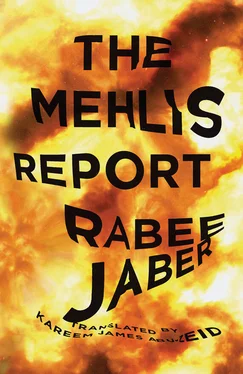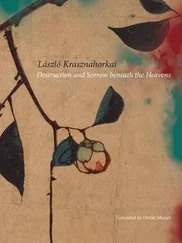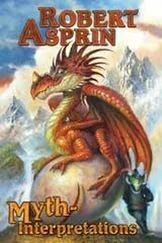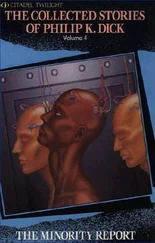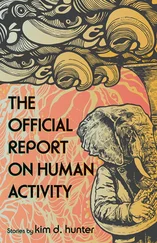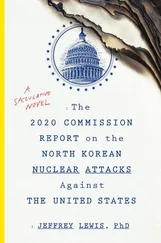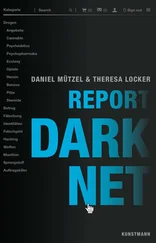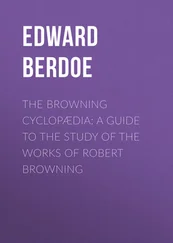I did not cross a river. My grandfather carried me. His hair was black. He said he dyed it because his white hair kept reminding him of the other side, and the memories pained him. The longing wore him out. So he dyed his hair and thought he was starting anew. He thought this was another life.
I’ve often written about that time when the moon was in the sky. The swamp was full of broken light, broken like glass. The city’s windows were empty and black, like the windows of the abandoned Al-Murr Tower. I gazed at those windows just as Saman did: they looked like the eyes of a ghoul staring at the city. I’ve often written about the demarcation line and the path I traveled from the museum to Sodeco Square and downtown. The moon was glistening like silver on the empty windows as I walked. The power was out. The city was dark, deserted, as still as dirt: it seemed so distant. I didn’t let the animal with the yellow eyes touch me.
There are seven smaller rats and one big one. The big rat lives in the belly of the mountain. And the seven rats sleep in seven separate lairs near the big rat’s, also in the mountain’s belly. The big rat spends most of its hours asleep. It sleeps for long stretches of time. In 1990, at the end of the war, it went into hibernation. There were fewer dead with the end of the war, so there were fewer souls, and less work to do. It was hungry, and it sunk into a deep sleep to overcome this. Or maybe the hunger made it drowsy, sent it into hibernation. It slept like a bear sleeps through winter. The seven other rats are smaller, but they’re still giants — each one is the size of a mule. There are other smaller rats, and there are ordinary rats as well. But we only see them on rare occasions. They live in the bowels of the earth, and only very rarely come up to the surface.
The mountain had quaked with the recent series of explosions. fourteen explosions? Less? And the big echoing blast: the mountain convulsed, and the big rat was rocked from its slumber. Two thousand pounds of TNT is no small amount of explosives. I saw Saman standing behind the yellow tape with a lot of people, looking over the rifles and shoulders and caps of the soldiers and police, looking at the black chasm in front of the Saint Georges Hotel. I saw the fallen balconies. I saw the shattered glass all over the cars and sidewalk and olive trees. I saw the scorched palms. I saw the scattered body parts. I saw the hose of a fire truck. I saw water gushing like a river from that hose, washing blood and human remains from the sidewalk, dragging them through the iron bars of a sewage drain. I saw a mouse on the street. I saw a cat pick up a white hand from the piles of rubble and glass. The buildings were scorched in black. The glass from the window of the British Bank lay shattered on the ground. The steel and wood scaffolding of the adjacent construction site leaned in the air, but did not fall. I saw crowds of people making their way to the site of the explosion, and I remembered the war. After any explosion or shelling, we’d always go see the destruction. We’d look at the damage and exchange glances of sadness and shock before exchanging any words. Some people were whispering. Some were raising their voices. Their eyes were not eyes. Their voices were not voices. I saw all of that.
The seven smaller rats had woken up as well: the days of industry must be drawing near again. These rats had perished during the war as they ran from one dead person to another. They weren’t evil. These weren’t the rats I used to read about in school. No, we never actually read about any rats, but the teachers used to threaten the troublesome schoolchildren with stories of rats. One of them once said to me: I’ll rub milk and yogurt in your ears and lock you up in the basement with all the rats.
I saw one of my teachers five years ago. She came here after me. I went with the others to welcome her. I went just like that — I didn’t have anything to do, and my eyes were worn out from all the reading, so I said I’d go and observe the rituals, and then I’d write. A writer loves to observe different traditions, different customs.
I went and saw her. She seemed to be limping. Why was she limping? They told me she had fallen in her home and died. What had killed her? They said she had suddenly become ill with cancer. The cancer was in her bones, it hollowed them out. Her femur snapped like a twig and she died. I was filled with sadness as the voices told me what had happened to her. I had always hated her in the land of the living. But when I saw her here, in front of a line of stores decorated for Christmas, I felt such incredible sadness. I was overcome with pity. There was a jug of water in my hand. If I’d had enough strength, I would have rushed over to her and poured her some water, and supported her. But where could I have found such strength? I leaned on an electrical pole and looked at her lame body on the distant sidewalk as she gazed at the clothes in the storefront windows. There were lights everywhere, strings of multicolored lights; real Christmas trees and fake plastic ones; cotton or snow or sprinklings of artificial snow on the branches. Balls of all colors hung from the trees: red and yellow and white and blue. Miniature reindeer; small cardboard caves with nativity scenes beneath the trees; toys and dolls. The street was full of decorations, and the limping woman did not know where she was. She looked confused. Her face had turned pale. I could see a wound on her chest: her blouse was undone, and a white bandage was visible. Why was her blouse undone? It wasn’t a blouse. She emerged from the shadows and stopped beneath a streetlight, and I realized she was wearing a white cotton hospital gown. The immaculate white gown pressed against her flesh — she wasn’t wearing anything underneath. I felt cold just looking at her. The damp wind of the land of the dead felt like ice against my skin, like frozen mud. I could feel her fear. Fear? Or sadness? I wanted to support her, to explain everything, to give her some water. But I didn’t move from my spot. My hand was on the pole, and my head was sweating.
I have so many things to write. I write and write and write. After I’ve read what I’ve written, I request that it be torn up. I always want to tear up these pages. Writing is hard. I don’t know how to write about the things I see. I see things day and night. Every time I leave the house I see people and speak with them. Even when I’m at home or in the library, I see things. I want to write about what I see. They have to be written about. The things themselves don’t care if they’re written down, they’re not interested in that. But I care, and I’m interested. I have to write about what I see. Why do I have to write about these things? Because I can’t sleep if I don’t. I can only sleep once I’ve written something down.
But when I read the page I’ve written, I want to tear it up. Writing is hard. I haven’t written what I wanted to write. There’s a dark chasm between what I’ve seen and what I’ve written: cars disappear in it, and bodies do too. “After the explosion, the security forces cordoned off the scene of the crime,” I read along with Saman. They set up a cordon and blocked off the road and stopped people from entering that street. The people had relatives beneath the rubble, but they weren’t allowed to go in and take their dead. Those who died in Hariri’s motorcade were taken to hospital morgues: to the American University Hospital, and the Hôtel-Dieu Hospital, and the Maqasid Islamic Hospital. But there were other people who just happened to be at the seafront at the time of the explosion, who were walking along the corniche for exercise or leisure, and who were passing by that spot by chance — they were buried beneath the rubble. The security forces had to stop their relatives from coming in and going through the crime scene to dig up the remains. One of the victims had a cell phone. He had tried calling his family. He wasn’t dead yet. He said he was buried under a car. He called and said his leg was stuck beneath the burning car. I read the words with Saman. Did I believe what Saman was reading? Did he believe it?
Читать дальше
